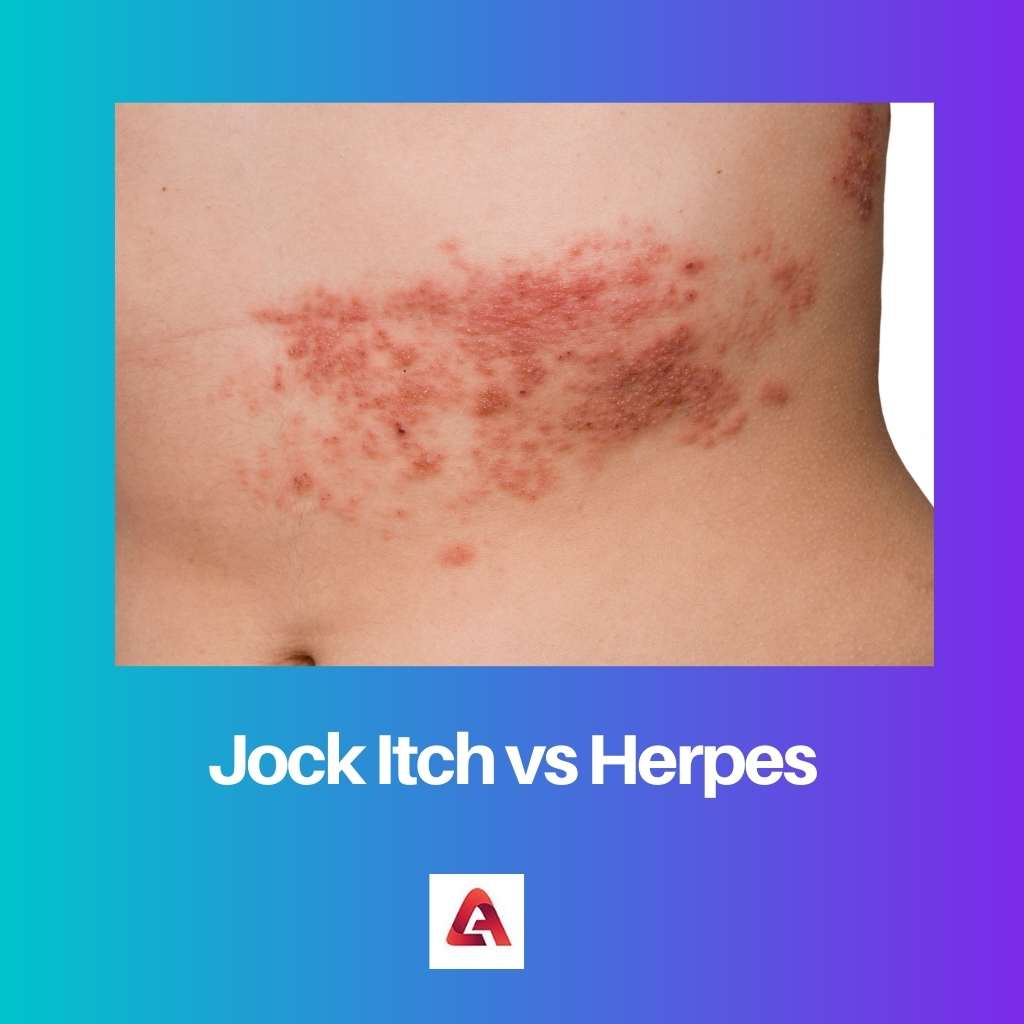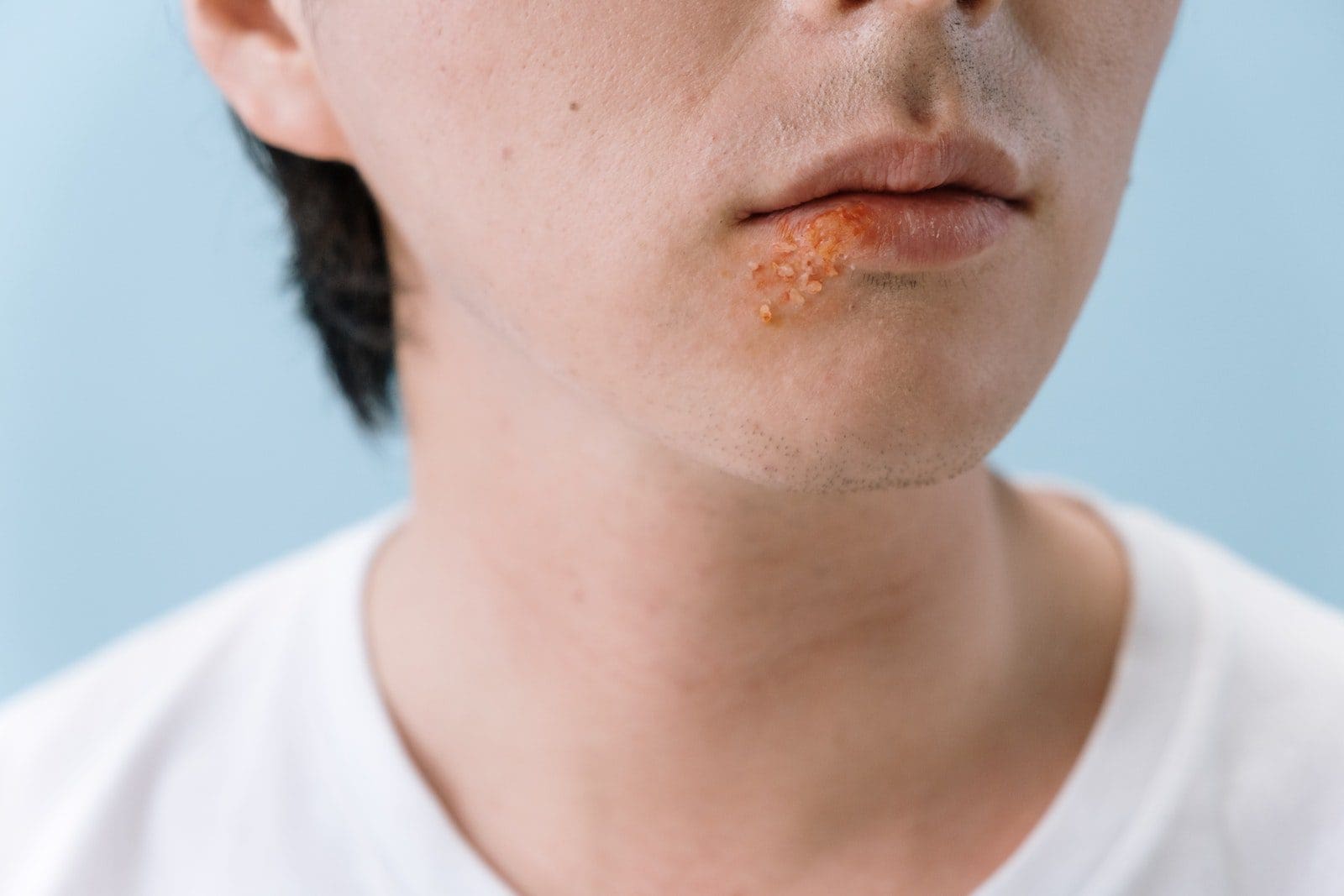Skin disorders can be painful or painless but sometimes they have their marks left behind. One can’t imagine the permanent marks permanent with pain.
Jock Itch and Herpes are the types of skin disorders. Both disorders have different signs and symptoms, treatments, and side effects.
These skin disorders are not harmful to one’s life but the severity may affect the health conditions.
Key Takeaways
- Jock itch is a fungal infection affecting the groin area, whereas herpes is a viral infection that can impact various body parts.
- Jock itch causes a red, itchy rash, while herpes manifests as painful blisters or sores.
- Jock itch is not a sexually transmitted infection, unlike herpes, which can be transmitted through sexual contact.
Jock Itch vs Herpes
Jock itch is a fungal infection caused by the growth of a fungus. It causes a red, itchy rash that can spread to the thighs and buttocks. Herpes is a viral infection caused by the herpes simplex virus (HSV). It causes painful, fluid-filled blisters that can appear in different areas of the body.

Jock Itch is a type of skin disorder in which the person suffers from red and itchy rashes at the infected area which is painful. It is a fungal infection generated by a fungus called Trichophyton rubrum.
This disease can be prevented and cured with the help of a dermatologist and proper medications/treatment.
Herpes is a type of skin disorder in which the person has several red-colored blisters in the infected area. This symptom is visible, in some cases, it is not.
It is a viral infection caused by a virus called Herpes Simplex Virus. It is of 2 types- HSV-1 and HSV-2. According to the type of virus, it has its effect on different body parts.
Comparison Table
| Parameters of Comparison | Jock Itch | Herpes |
|---|---|---|
| Definition | Jock itch is a skin disorder causing red and itchy rashes | Herpes is a skin disorder that causes a blisters of cold sores |
| Caused by | It is caused by a Trichophyton rubrum | It is caused by Herpes Simplex Virus |
| Taxonomy | Fungi | Virus |
| Types | None | Two types- HSV-1 and HSV-2 |
| Symptoms visibility | Signs and symptoms are visible | Signs and symptoms are sometimes not visible |
| Also called as | Tinea pedis, athletes disease, crotch itch | None |
What is Jock Itch?
Jock itch is caused by a fungus named Trichophyton rubrum creating a red and itchy rash on the warm and wet areas of body parts. It is also called Tinea pedis or athlete’s disease.
Jock itch got its name after the fact that it’s common among athletes. It is also common among people who sweat a lot and overweight people.
Jock itch is not significant, although it is painful. Keeping the genital area clean and dry, as well as applying topical antifungal drugs to the afflicted skin, are the possible treatments of jock itch.
A reddish region of skin in the groin crease is the most common symptom of jock itch. In a half-moon form, it spreads to the upper thigh.
A ring-shaped rash with a line of tiny blisters may be seen. The skin could be flaky or scaly, and it could burn or itch.
Jock itch can be transferred from one person to another by sharing clothing and towels (the items that are used for the body and are direct in contact with body parts).
We can prevent the causing of this fungal infection by keeping ourselves dry, wearing clean clothes, not wearing too tight clothes, and not sharing personal hygiene items with anyone.
It is seen in males, adults, people who wear tight clothes, overweight people, and people having diabetes. For treatment, consulting a doctor is the only way to cure it.
Antifungal creams, gels, powders, ointments, sprays, etc are used to cure the disorder.

What is Herpes?
Herpes (herpes simplex virus), which is also known as HSV. Herpes can affect any region of the body, however, it most affects the inner parts (genital areas) and mouth. It is caused by a virus known as HSV-1 and HSV-2.
Both types of viruses have various effects on different parts and treatments as well.
HSV-1 attacks the area around the mouth leaving blisters along with causing cold sores. HSV-1 is mainly spread by sharing the same spoons and utensils, kissing and sharing lip products, etc.
Sometimes, it is also observed that HSV-1 viral patients can also experience genital herpes during oral intercourse.
HSV-2 also known as genital herpes, is a sexually transmitted skin disorder to the genital areas. Sexually active teenagers from 14 years and old people till 50 years old, everyone can be infected by this disorder.
Women are more exposed to this disorder especially black women are more prone to this skin disorder.
You may have this skin disorder but is unaware of it and unknowingly transmit it to the other person. So, genital herpes can also be asymptomatic.
Most Americans have this skin disorder of about half the population.
A person having herpes experiences discomfort and pain, but it is not threatening to his life. One cannot completely cure herpes, but you can lower the possibility to transmit it to another person by proper medications and treatment.

Main Differences Between Jock Itch and Herpes
- Jock Itch is caused by a fungus called Trichophyton rubrum whereas Herpes is caused by a virus called Herpes Simplex Virus (HSV-1 and HSV-2).
- Jock itch is also called Tinea pedis or athletes’ disease while Herpes disorder is called the same by the name of the virus that causes this skin disease.
- Jock itch can be cured by medications and treatment but herpes disorder cannot be cured.
- When a person is infected with jock itch, red and itchy rashes occurs while a person is infected with herpes, the symptoms may be visible with blisters around cold sore or may not be visible.
- Generally the groin area and inner parts of thighs are affected by jock itch disorder. The area around the mouth and face as well as genital areas are affected by virus HSV-1 and HSV-2 respectively.

- https://journals.asm.org/doi/abs/10.1128/CMR.12.1.1
- https://www.wnyurology.com/content.aspx?chunkiid=103052
